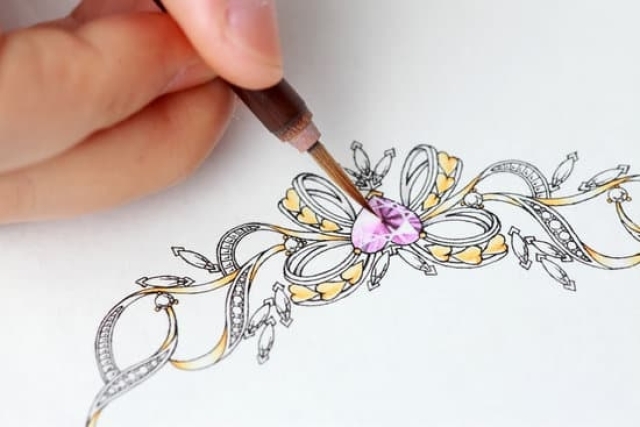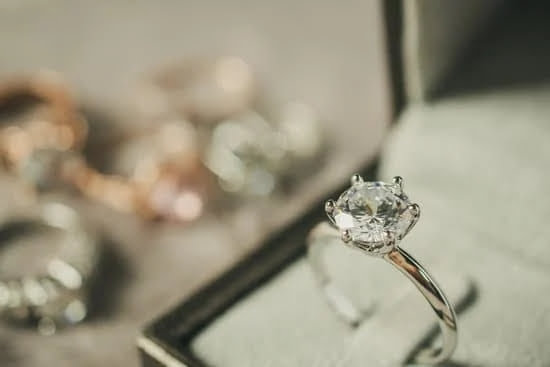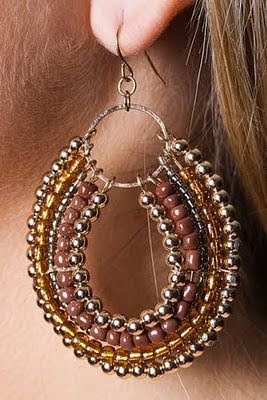Jewelry design and repair can be thought of as an art form. It is a combination of technical skill and creativity that is used to create beautiful masterpieces. Jewelry can be made out of a variety of materials, including metals like gold, silver, platinum and brass; semi-precious stones such as opal, tourmaline, garnet and topaz; and colored beads for hand-crafted designs. Examples of jewelry that can be designed include necklaces, rings, earrings and other body adornments.
In order to create the perfect piece of jewelry, skillful jewelry designers must take into account the client’s expectations in terms of design style, materials used or price range. It is important to select the right tools and equipment that are appropriate for working with the chosen material while keeping safety in mind.
Jewelry repair involves making structural repairs or replacing lost or damaged components on existing pieces. Repairs may also include resetting gems or changing metal finishes depending on the existing piece.
When it comes to jewelry design and repair there are many considerations to keep in mind such as selecting the right tool for a specific project or choosing how to best finish off a piece with highlights or polishing techniques. Aspiring jewelry designers should take time to research different processes before starting any project so they understand what is involved when making intricate pieces from scratch or repairing original works.
Additionally practicing their craft will help them hone their skills and come up with creative ideas able to provide customers with beautiful custom designs that fit their expectations perfectly.
What Types of Jewelry Can Be Repaired?
Jewelry design and repair is a specialized craft that blends creativity with an immense attention to detail. From artfully crafted pieces to the intricate restoration of delicate materials, jewelry designers create unique pieces of lasting beauty and quality.
At the same time, they are well-versed in the methods used to restore precious metals, gems, and stones to their former brilliance. Jewelry repair professionals can bring rings, earrings, bracelets, necklaces, and other accessories back to life with just a few tools.
The types of jewelry that can be repaired vary greatly depending on the skill level of the jeweler and their specific practices. Each piece of jewelry is unique in its material components – gold, silver or platinum; diamonds or other gemstones; and colored stones or pearls – all requiring different techniques for repair.
Earrings can undergo repairs for loose posts or missing backs; necklaces can require changes made to broken clasps or chains; rings may need reshaping from worn sizing beads or centers stones replaced due to scratches or damage.
Even more complex services such as reconstructing vintage pieces are possible due to advanced technology and equipment. In addition, many jewelers offer custom design services alongside basic repairs so customers have complete access to their own unique vision.
Jewelry restoration is not only important for those looking for end products but also manufacturers interested in archiving data about each of their jewelry lines for customer service later on. Information about construction techniques and materials used helps bring designs back up to speed without sacrificing structural integrity over time. By documenting your adventures throughout the jewelry repair process, you can guarantee success if someone ever needs assistance with replacing parts or leveraging additional training resources down the line.
Overall jewelry design and repair involves considerable technical skill from crafting beautiful pieces from scratch all the way down to keeping long-lasting records for potential future needs of a particular piece of workmanship. The end result – gorgeous works of artistry whose final phase often comes just as powerfully as its original state.
Common Jewelry Design Processes
Jewelry design is the process of turning an idea or concept into a physical piece of jewelry. This process begins with the designer sketching out their ideas on paper until they have a design concept to work with. This can be achieved by hand, or alternatively, there are many CAD software packages available that can assist in creating digital jewelry designs. Once the concept is agreed upon, the jeweler typically begins producing the jewelry.
Depending on the materials used, this may involve casting or carving a prototype design from wax or other materials, and then casting the final product in metal (such as gold, silver, platinum). Additionally, gemstones may be added to complete the desired look. The end result is a custom-made piece of jewelry tailored to individual’s specific requirements.
Jewelry Repair – explain what may need repair and how
Jewelry repair is exactly what it sounds like: fixing up existing pieces of jewelry. Professionals who specialize in this field are capable of restoring valuable antiques or family heirlooms, as well as modern pieces that are simply worn from use over time.
Examples include replacing lost stones from settings, reshaping worn settings and bands, straightening bent pieces to match the original design intent, and even adding new details such as diamond encrusting for a higher level of detail and beauty. Depending on the damage done to the item being repaired, some processes must be performed in specialized equipment designed specifically for high precision work such as laser welding and polishing machines.
Professional Jewelers – talk about what types of services someone could go for/what type of job opportunities one might find
The art of designing and fabricating custom jewelry requires unique skills ranging from conceptualizing designs to achieving precise technical execution when it comes to constructing each piece. Professional jewelers often specialize in these two key areas depending on their particular talents and interests but all must demonstrate excellent technical knowledge in order to excel within their chosen profession.
Additionally they must possess excellent artistic skills – conceptionally visualizing how best each project should come together whilst simultaneously having an eye for detail when it comes to both form and function throughout each individual stage of its production process.
Those individuals looking to break into this area may find that amongst job roles available include apprenticeships as well as fulltime designers at established firms across different segments within this industry including bridal jewelry, costume jewelry design and luxury goldsmiths for high end clientele demands etc ….
Tools Required for Design and Repair of Jewelry
Jewelry Design and Repair is a creative process that involves the creation and restoration of man-made adornments. From crafting unique pieces to restoring heirlooms, this industry includes a variety of activities. First, designers create new pieces using sketches and molds. Then, they select colors and materials such as gemstones, shells, metals and plated jewelry. The second part of Jewelry Design and Repair involves the cleaning, restoration, repair and refashioning of damaged items for personal use or for existing collections.
No matter what type of work is being done within the Jewelry Design and Repair field, various tools are used to complete both design or repair tasks. For example, designers often use cutters, saws, files and drills to shape metals into desired shapes but may also employ electropolishing tools for finishing projects quickly.
On the repair side, soldering irons are one of the most common types of tools used to reconnect broken chains or repairing damages caused from wear over time.
Other types of equipment such as mandrels allow jewelers to accurately adjust ring sizes as well as sizing beads correctly. Furthermore, jewellers may utilize magnifying loupes escopes which provide extra magnification while scrutinizing small details during intricate repairs.
Lastly polishing machines are used to refinish surfaces that require a smooth finish prior to putting finished pieces on the market again. These machines use different abrasives including rouge polishing wheels to buff out imperfections in order to bring back original luster in gold silver or other metals being polished.
Though some specialized jewelry design projects can take years to complete with great attention-to-detail given by skilled artisans; utilizing adequate tools along with creative imagination can make even complex pieces possible within shorter time-frames making these efficiencies goal in an artisan’s career.
Principles of Jewelry Design
Principles of jewelry design have been around for centuries, dating back to ancient Egyptian times. Jewelry design can vary greatly from one region to another and even from one tribe or family to another. It is often used to demonstrate aesthetic qualities and express subtle meanings through the craftsmanship.
Different materials and metal work certainly contribute to the beauty of jewelry designs, but particular attention should always be given to shape, form, size and line. Knowledge of color theory is also important when creating jewelry as it helps balance out a piece across different stones or metals.
Materials used in jewelry designs are an integral part of the design process. Gold has long been seen as a symbol of wealth, while silver denotes wisdom and purity.
Precious stones such as diamonds and sapphires need to be carefully chosen based on the color scheme desired, their clarity, quality and size all being excellent indicators of value. Pearls particularly need special consideration since they can come in multiple forms and shapes ranging from potato pearls all the way up to rounders or semi-rounds making them incredibly versatile for any design project.
The repair aspect also has an absolutely essential role within this field of expertise; after all you would not want someone with no experience attempting repairs with expensive items like gold jewelry. A skilled repairer must understand how different types of metals interact with each other so that they can successfully perform a multitude of difficult tasks such as welding two pieces together or soldering clasps onto delicate settings.
The skillset required ranges in complexity depending on what needs repair but ultimately precision is key ensuring everything stays in place during wear & tear tests achieved by simulating everyday usage conditions like those we subject our own pieces too regularly.
Factors to Consider Before Choosing a Jewelry Design and Repair Shop
Jewelry design and repair is a specialized profession that involves designing, repairing and customizing pieces of jewelry. It encompasses a wide range of activities and can include everything from creating original designs to assessing the value of existing pieces to changing gemstones or resizing and adjusting bracelets, necklaces, earrings, rings and other jewelry items.
Those interested in this field should take into consideration the full range of services that are offered by various jewelers, including those specializing in design and repair. The nature of these services is highly varied; depending on the store, customers can choose from an array of offerings such as custom designed jewelry, engravings, restoration or repairs of old pieces as well as remodeling existing ones.
A customer should also be aware of how much a particular type of repair or customization job will cost as prices will vary between different shops.
Other factors to consider when selecting a jewelry design and repair shop include their reputation among customers, the quality of their workmanship as well as the materials they use for repairs or customization jobs. Most established stores have online reviews that describe the experiences people had with them so looking up these reviews could give potential customers an idea about what to expect when opting for a certain store.
In addition to online reviews it’s advisable that potential customers get in touch with existing clients by asking them their opinion about the store in question so that they can make an informed decision when putting their trust into a particular masterpiece being repaired or customized at a particular shop.
Skills Necessary for Jewelry Design and Repair
Jewelry design and repair is a hands-on craft that requires precise technical skills, knowledge of metals as well as various tools and equipment. This craft combines artistry and engineering to create beautiful pieces of jewelry. A successful jewelry designer must also posses keen aesthetic sensibilities to understand both the materials and the design before beginning a piece. Jewelers must be able to take the customer’s ideas or vision and transform them into an exquisite piece of jewelry.
In addition to having creative and artistic abilities, a successful jewelry designer must also master several complex technologies for designing models, creating molds, working with precious metals, putting together intricate settings, as well as sanding, polishing and soldering. Technical skills are paramount in this profession as they all necessitate attention to detail in order to produce high quality pieces.
To become a repareir, it requires knowledge of different techniques and material properties such as abrasives, stamps and grinders amongst others in order to cut, reshape or alter pieces correctly. A professional repairer should be able to work quickly yet accurately in order ensure that any alterations made do not compromise the integrity of the original piece of jewelry.
As has been previously stated these processes require attention to detail with sharp eyes since projects also require tedious tasks such as aligning small parts or setting stones precisely for symmetry.
In addition jewelers should demonstrate excellent mathematical abilities so that measurements made are accurate at each step. Lastly being organized is also essential because when fixing any mistakes pace is key so being able to identify, fetch and execute rapidly all necessary tools increases productivity significantly.
Summary of Jewelry Design and Repair
Jewelry design and repair is an exciting career that offers creative opportunities to learn and grow. Working with precious metals and gems, those who work in jewelry design and repair create beautiful pieces that can be treasured for many years. Jewelry designers bring a customer’s dream into reality by creating custom pieces that represent the customer’s personal style, while skilled jewelry repairers repair these cherished heirlooms or restore them back to their former glory.
The field of jewelry design and repair is one that requires both technical skill and creative talent as well as a good understanding of materials science and physical properties of different metals such as gold, silver, and platinum. A jeweler will need to be able to set gemstones securely into settings and use various fabrication techniques in order to create unique pieces of wearable art.
They will also need knowledge of traditional methods of crafting fine jewelry from ancient civilizations, modern day production techniques, setting stones, welding etc.
In addition to creativity, strong problem solving skills are essential when it comes to Jewellery Design & Repair because unexpected problems can occur – Especially when creative freedom is given during the process or dealing with repairs or enhancements on a piece of jewellery. As a designer which you may need locate resources for replacement stones or material, develop alternative construction options for components where needed or consider how repairs could be done with available resources.
During repairs jewellers must identify any potential damage caused by aging or wear on jewels so they can cost effectively adapt there repairs around this.
Jewelry design & repair combines the elements of artistry with technical craftsmanship creating a distinctive profession which requires both practical skills & imagination; making it incredibly rewarding for those who pursue it professionally. Alongside this it provides those who pursue it professionally the opportunity for financial reward & job satisfaction through; enjoying direct customer contact, creative collaboration & success working on bespoke projects within an ever changing industry landscape which values craftsmanship over mass produced goods.

Welcome to my jewelry blog! My name is Sarah and I am the owner of this blog.
I love making jewelry and sharing my creations with others.
So whether you’re someone who loves wearing jewelry yourself or simply enjoys learning about it, be sure to check out my blog for insightful posts on everything related to this exciting topic!





